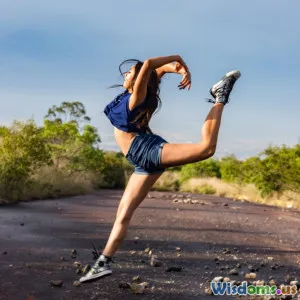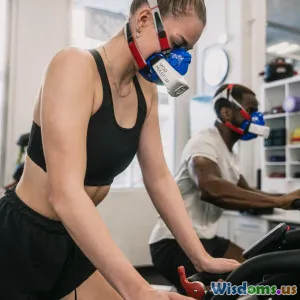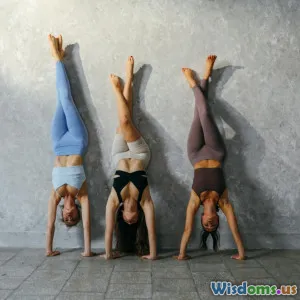
Biomechanics: The Science Behind Movement
9 min read Explore how biomechanics unlocks the science of human movement to revolutionize sports performance and injury prevention. (0 Reviews)
Biomechanics: The Science Behind Movement
Introduction
Imagine an elite sprinter shaving milliseconds off their race time or a recovering athlete regaining flawless movement after an injury. What drives these miracles is more than raw talent or grit—it’s the meticulous understanding of biomechanics. Biomechanics, the scientific study of the mechanical laws relating to the movement of living organisms, sits at the intersection of biology, physics, and engineering. This discipline provides invaluable insights into how humans move, how their bodies respond to forces, and how movement can be optimized or rehabilitated.
This article explores biomechanics as a key pillar in sports science and health. By uncovering the principles of human movement, biomechanics not only enhances athletic performance but also plays a critical role in injury prevention and rehabilitation. From understanding joint mechanics to leveraging wearable technology, we will unpack the fascinating science behind every step, jump, or throw.
The Foundations of Biomechanics in Movement
What is Biomechanics?
At its core, biomechanics involves analyzing forces and their effects on the human body. It combines anatomy with Newtonian physics to study how muscles, bones, tendons, and ligaments generate movement. In sports science, this means breaking down complex motions—such as a tennis serve or a high jump—into mechanical components to improve efficiency and safety.
For example, when a basketball player shoots a jumper, biomechanics can identify the optimal angle of release, limb positioning, and body posture that maximizes shot accuracy while minimizing strain on the shoulder joint.
Key Principles: Kinematics and Kinetics
Biomechanics utilizes two fundamental aspects of motion:
-
Kinematics: This studies the geometry of motion without considering forces—examining variables like velocity, acceleration, and joint angles.
-
Kinetics: This delves into the forces that cause movement, including gravity, ground reaction forces, and muscle-generated force.
Together, these principles enable scientists and coaches to construct detailed models of athletic movements to diagnose inefficiencies or potential injury risks.
Biomechanical Applications in Sports Performance
Enhancing Athletic Technique
Refining technique based on biomechanical assessment is a game-changer. Elite athletes often work with biomechanists and sport scientists to make data-driven adjustments.
Take the example of Usain Bolt, whose top speed was analyzed in terms of stride length and frequency. Biomechanics revealed that while his stride frequency was not the absolute highest, his longer stride length due to his height gave him a competitive edge. Coaches leverage such insights to tailor training programs to individual athletes’ body mechanics.
Optimizing Equipment and Training Tools
Equipment plays a crucial role, and biomechanics informs its design:
- Running shoes: Advances incorporate analysis of foot strike patterns and pressure distribution, helping reduce injuries like plantar fasciitis.
- Swimsuits and cycling gear: Designed to minimize drag and improve hydrodynamics or aerodynamics.
Additionally, training tools such as force plates and motion capture systems measure ground reaction forces and joint angles in real time, offering immediate feedback to athletes.
Real-Time Monitoring and Wearable Technology
Modern wearable sensors provide continuous biomechanical data that helps athletes refine movement and avoid overuse injuries. For instance, inertial measurement units (IMUs) embedded in clothing or devices can monitor joint load and muscle activation during activity.
A study published in the Journal of Sports Science & Medicine highlighted how soccer players improved kicking technique by monitoring hip flexion and knee extension angles during training with wearables.
Injury Prevention and Rehabilitation Through Biomechanics
Understanding Injury Mechanisms
Sports injuries often arise from improper biomechanics. For example, anterior cruciate ligament (ACL) tears, common in female soccer players, frequently occur due to poor knee alignment and valgus collapse during landing.
Biomechanics allows clinicians to identify these risk factors through gait analysis and biomechanical assessments. Early detection leads to targeted interventions.
Designing Prevention Programs
Based on biomechanical insights, tailored programs focus on balance, strength, and neuromuscular control to improve movement patterns. The FIFA 11+ injury prevention program, for example, incorporates biomechanically-informed drills shown to reduce ACL injuries by more than 30%.
Role in Rehabilitation
After injury, restoring proper mechanics is critical. Biomechanical tools help track progress objectively during rehabilitation by analyzing range of motion, muscle symmetry, and joint loading.
A 2020 study demonstrated that integrating biomechanical assessments in post-ACL reconstruction rehab reduced re-injury rates by guiding athletes back to sport only after achieving biomechanical norms.
The Future of Biomechanics in Sports Science
Integrating Artificial Intelligence and Machine Learning
The next frontier involves AI-driven biomechanical modeling capable of predicting injury risk and optimizing training routines tailored to individual athletes. Automated pattern recognition can identify subtle deviations in movement that humans might miss.
Virtual and Augmented Reality Applications
VR and AR offer immersive environments for biomechanical training simulations, allowing athletes to practice and correct movements in real-time with virtual feedback.
Personalized Biomechanical Solutions
Combining genetic, anatomical, and biomechanical data will lead to hyper-personalized sport recommendations—from ideal footwear to training volume—that maximize performance and health.
Conclusion
Biomechanics is much more than an academic field—it is the scientific heartbeat behind human movement in sports science and health. By applying biomechanical principles, we gain a detailed understanding of how the body moves, how to enhance athletic performance, prevent injuries, and customize rehabilitation.
From leveraging wearable technology to sophisticated motion capture and AI modeling, biomechanics empowers athletes and healthcare professionals with actionable insights. As research and technology advance, the promise of biomechanics continues to grow, unlocking new potentials for athletes of all levels.
Embracing the science behind movement offers everyone—from weekend joggers to Olympians—the ability to move smarter, safer, and stronger.
“Biomechanics is not just about movement; it’s about understanding the body’s story in every action.”
References
- Hamill, J., Knutzen, K. M., & Derrick, T. R. (2015). Biomechanical basis of human movement. Lippincott Williams & Wilkins.
- Hewett, T. E., Myer, G. D., & Ford, K. R. (2006). Anterior cruciate ligament injuries in female athletes: Part 2, a meta-analysis of neuromuscular interventions aimed at injury prevention. The American Journal of Sports Medicine, 34(3), 490-498.
- Duda, G. N., et al. (2020). Biomechanical principles in rehabilitation and return to sport after ACL reconstruction. Sports Medicine, 50(6), 1021–1033.
- FIFA Medical Network. (n.d.). FIFA 11+ Injury Prevention Program. Retrieved from https://www.fifamedicalnetwork.com
- Raschner, C., Platzer, H. P., Patterson, C., Holzknecht, D., Lembert, S., & Hildebrandt, C. (2017). The effect of training load on injury and illness incidence in elite youth ski racers. Journal of Sports Science & Medicine, 16(1), 71–78.
Rate the Post
User Reviews
Popular Posts




















